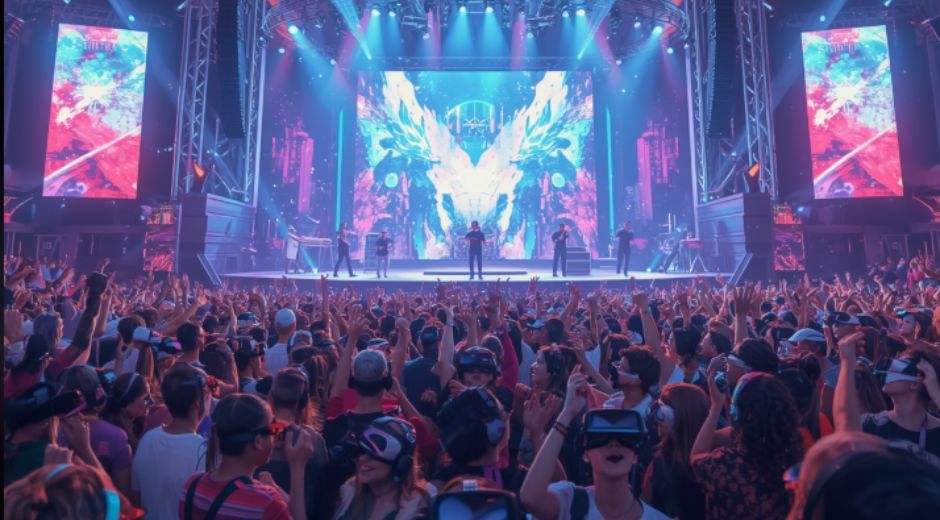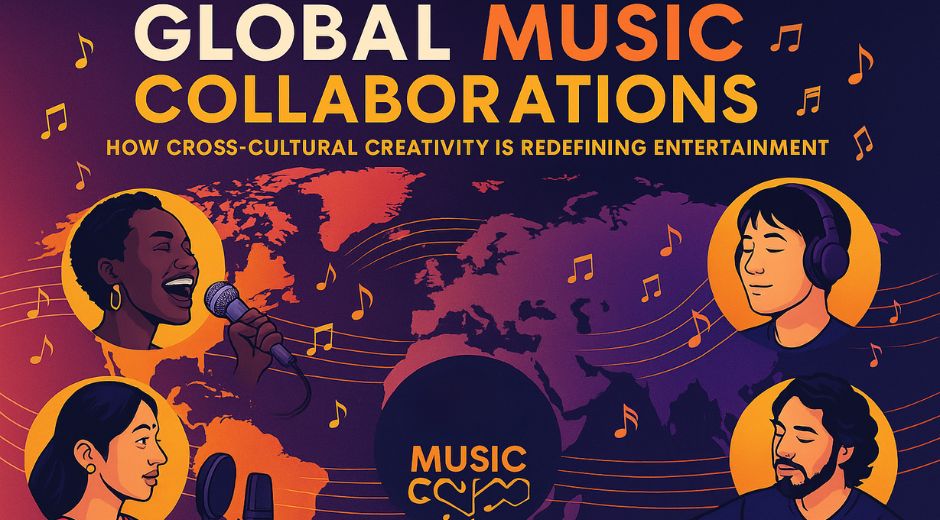Soundscapes: How Sonic Design Shapes Emotion and Immersion in Modern Culture
In a world increasingly filled with screens and images, it is easy to forget that sound remains one of the most powerful forces shaping our emotions, memories, and experiences. The concept of Soundscapes reminds us that the environments we hear are just as meaningful as those we see.
From the subtle hum of city streets to the echo of a concert hall or the carefully crafted audio in a film, Soundscapes influence how we feel, think, and connect. They are the invisible architecture of modern culture, transforming space and storytelling through the language of sound.
What Are Soundscapes?
The term “Soundscape” was popularized by Canadian composer and environmentalist R. Murray Schafer in the 1970s. He described it as the acoustic environment around us, both natural and human-made. Every environment, from a rainforest to a subway platform, produces a unique sonic fingerprint.
Today, Soundscapes have evolved into a multidisciplinary concept spanning music, architecture, cinema, and psychology. They are not just collections of sounds but deliberate designs that create atmosphere, emotion, and identity.
A Soundscape can soothe, energize, or disorient. It can tell stories without words and transport us across time and memory. In a world of constant noise, the art of listening to these layers has become an essential form of cultural awareness.
The Emotional Power of Sound
Sound reaches us on a primal level. Before humans learned to speak, we communicated through tone, rhythm, and resonance. This ancient connection explains why Soundscapes evoke emotion so effectively.
Music triggers the release of dopamine, a chemical linked to pleasure and reward. Similarly, environmental sounds influence the nervous system. The gentle rhythm of waves can slow heart rate and promote relaxation, while mechanical noise raises stress levels.
According to BBC Culture, sound is one of the most direct pathways to emotion because it bypasses logical reasoning. It vibrates through the body, resonating with instinct rather than intellect. This is why certain Soundscapes can instantly calm or disturb us.
Soundscapes in Film and Television
Cinema has long understood the power of Soundscapes. While visuals capture attention, it is often sound that deepens immersion. The low rumble before a storm, the echo of footsteps in an empty corridor, or the faint hum of machinery in a science fiction film all contribute to storytelling.
Legendary sound designers like Ben Burtt, who created the sound of lightsabers in Star Wars, and Walter Murch, who shaped the sound of Apocalypse Now, turned audio into narrative art. Their work demonstrates that a Soundscape can guide emotion more effectively than dialogue.
Modern streaming platforms invest heavily in sound design because immersive audio keeps viewers engaged. Surround and spatial sound technologies create 3D environments that blur the line between fiction and reality.
The Role of Soundscapes in Gaming
In video games, Soundscapes are fundamental to immersion. Developers build entire sonic ecosystems that react dynamically to player movement. The crunch of gravel, the rustle of leaves, or the distant howl of a creature all provide feedback that enhances realism.
Games like The Last of Us or Journey use sound not only for atmosphere but for storytelling. Silence, too, becomes a narrative tool, creating tension or intimacy. As gaming moves into virtual and augmented reality, Soundscapes are becoming even more sophisticated, simulating the way sound behaves in real physical spaces.
Sound is not merely background; it is a character that breathes life into digital worlds.
Architecture and the Sonic Environment
Architecture traditionally focuses on visual form, but a new generation of designers is exploring how buildings sound. Acoustic architecture considers how sound moves through materials, rooms, and public spaces.
Museums, airports, and offices now integrate Soundscapes to influence behavior and comfort. For instance, soft ambient tones in hospital waiting rooms can reduce anxiety, while lively music in retail spaces increases dwell time and sales.
The way a space sounds affects how it feels. A cathedral’s echo inspires awe, while the controlled quiet of a library invites focus. Understanding Soundscapes allows architects to build not just with stone and glass, but with air and vibration.
The Natural Soundscape and Human Health
Beyond art and design, Soundscapes have a profound impact on health. Exposure to pleasant natural sounds improves mood and cognitive performance, while chronic noise pollution contributes to stress, hypertension, and sleep disorders.
Studies have shown that listening to birdsong or flowing water can restore mental energy and lower cortisol levels. This connection is so strong that urban planners are now designing “sonic parks,” areas where natural sounds are amplified and mechanical noise is reduced.
Workplaces are also beginning to use biophilic sound design, integrating nature-inspired audio to enhance focus and reduce fatigue.
The Role of Silence
Silence is an often overlooked but crucial part of every Soundscape. It frames sound, giving it meaning and contrast. True silence is rare, yet even brief moments of quiet allow the mind to reset.
In art, silence is powerful. Composer John Cage’s piece 4’33” invites audiences to listen not to music, but to the sounds of the environment itself. This radical idea reminds us that every Soundscape, intentional or accidental, is a form of music.
In daily life, cultivating silence improves attention, creativity, and emotional clarity. Turning down the volume of the world can help us hear the finer details of existence.
Soundscapes in Everyday Culture
From cafés to airports, Soundscapes shape daily life more than most people realize. Branding experts now design signature audio identities for companies. The sound you hear when your phone starts up, a car unlocks, or a credit card is approved are all part of intentional sound branding.
These micro-soundscapes build emotional familiarity and reinforce brand identity. A consistent sonic signature can become as recognizable as a logo.
Cultural institutions, too, are embracing Soundscapes as storytelling tools. Museums curate audio environments to complement exhibitions, allowing visitors to feel history through sound.
The Digital Era of Soundscapes
With digital streaming and AI-generated music, sound design has entered a new frontier. Algorithms can now compose adaptive Soundscapes that evolve based on user activity.
Meditation apps use generative sound environments that respond to breathing patterns or heart rate. Video platforms integrate immersive audio tracks to make content more engaging. Artificial intelligence even analyzes listening habits to recommend personalized sonic experiences.
According to Moviefil, companies are developing intelligent sound engines that will one day allow users to “design” their own acoustic environments for work, relaxation, or creativity.
This merging of technology and emotion represents a new chapter in human interaction with sound.
The Sociology of Sound
Sound reflects culture and identity. The noises of a neighborhood, the chants of a protest, or the songs of celebration all tell stories about who we are and what we value. Soundscapes reveal patterns of power, inclusion, and exclusion.
Sociologists study how urban sound exposure affects social behavior. Quiet, green neighborhoods tend to promote community interaction, while chaotic noise can lead to stress and isolation.
Sound becomes a map of cultural rhythm. Each society has its own sonic vocabulary that evolves with technology and time.
Environmental and Ethical Dimensions
Sound pollution is one of the fastest-growing environmental issues. Continuous exposure to mechanical noise affects not only humans but also animals. Birds change their songs to be heard over city noise, and marine creatures struggle to navigate in oceans filled with ship sounds.
Protecting natural Soundscapes is vital for ecological balance. Conservation groups are now recording endangered sound environments to preserve the planet’s acoustic heritage.
Legislation in some countries limits urban noise levels and promotes acoustic zoning. These initiatives highlight that a healthy environment includes both clean air and clean sound.
Soundscapes and the Future of Art
Artists are redefining performance and installation art through immersive Soundscapes. Interactive exhibitions allow visitors to walk through evolving sonic environments where movement influences rhythm and tone.
Sound-based art invites audiences to become co-creators. Instead of passively observing, they listen actively, exploring emotion through auditory perception.
At the same time, virtual concerts and online audio exhibitions are opening global access to sonic creativity. The pandemic accelerated this digital expansion, making sound one of the most adaptable art forms of the modern era.
The Psychology of Listening
Listening is an active skill, not a passive one. As life grows louder, many people have forgotten how to truly listen. Training our ears to notice detail can deepen empathy, awareness, and creativity.
Psychologists describe “deep listening” as a mindfulness technique that enhances emotional intelligence. By paying attention to tone, rhythm, and silence, we learn to interpret the unspoken layers of communication.
Incorporating conscious listening into education and therapy can improve relationships and reduce anxiety. The act of listening itself becomes a form of healing.
Soundscapes in the Metaverse
As virtual spaces evolve, sound is becoming a key element of digital immersion. In the metaverse, users will navigate environments not only visually but sonically. Spatial audio technologies create depth and realism that anchor virtual experiences.
Virtual reality developers emphasize that without authentic Soundscapes, even the most realistic graphics feel hollow. Sound gives texture and emotional context to digital existence.
The next frontier of entertainment will be multisensory, where hearing plays as vital a role as sight.
Conclusion: The Future of Sonic Awareness
Soundscapes remind us that sound is more than background noise; it is an active participant in shaping our perception of reality. Whether in art, architecture, or daily life, the quality of our acoustic environment influences how we think, feel, and connect.
As we move into an increasingly digital and immersive future, listening consciously becomes a form of resistance against overload. By reclaiming our attention to sound, we rediscover the emotional depth and cultural richness that defines being human.
In the coming years, the design of Soundscapes will be as vital as visual design, guiding us toward more balanced, expressive, and empathetic societies. The world will not only be seen differently; it will be heard differently too.
For more insights into how culture and technology intertwine, visit newspapersio.com and explore the latest analyses shaping tomorrow’s creative landscape.
The Pulse of Sport

Economic Blocs: How Regional Alliances Are Redefining Global Power
Economic Blocs: How Regional Alliances Are Redefining Global Power examines how nations unite through trade and policy to shape the world economy.

Blue Zones: Unlocking the Secrets of Longevity and Purposeful Living
Blue Zones: Unlocking the Secrets of Longevity and Purposeful Living explores how specific communities thrive through balance, purpose, and healthy habits.

Soundscapes: How Sonic Design Shapes Emotion and Immersion in Modern Culture
Soundscapes: How Sonic Design Shapes Emotion and Immersion in Modern Culture explores how music, noise, and silence influence perception and creativity.

Edge Intelligence: The Next Frontier of Smarter, Faster, and Decentralized Computing
Edge Intelligence: The Next Frontier of Smarter, Faster, and Decentralized Computing explores how AI and edge systems redefine real-time data processing.

Sanctions and Global Power: How Economic Pressure Shapes Modern Diplomacy
Sanctions and Global Power: How Economic Pressure Shapes Modern Diplomacy explores how nations use trade, finance, and policy to influence global decisions.

Circadian Rhythm: How Your Body’s Internal Clock Shapes Health and Performance
Circadian Rhythm: How Your Body’s Internal Clock Shapes Health and Performance explores how daily cycles influence sleep, energy, mood, and longevity.

Immersive Theater: Redefining How Audiences Experience Storytelling
Immersive Theater: Redefining How Audiences Experience Storytelling explores how interactive performance reshapes art, emotion, and audience connection.

Digital Twins: How Virtual Replicas Are Powering Real-World Innovation
Digital Twins: How Virtual Replicas Are Powering Real-World Innovation explores how this technology reshapes industries from healthcare to aviation.













